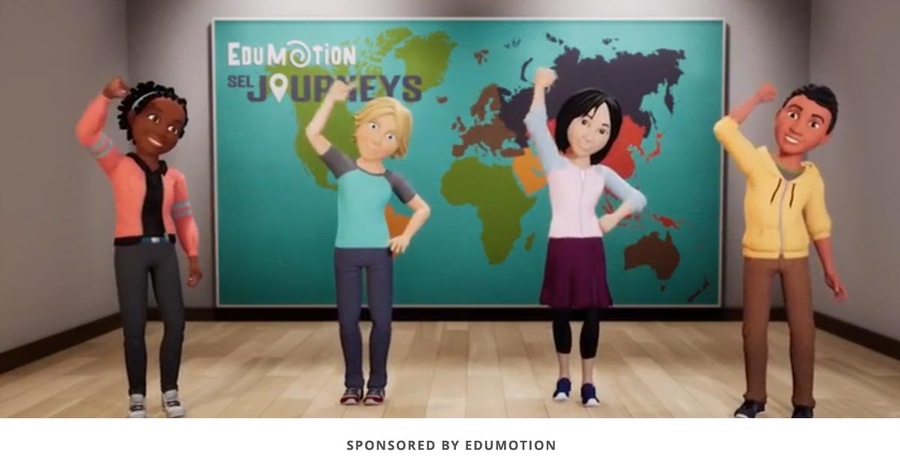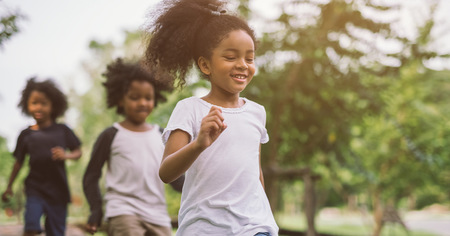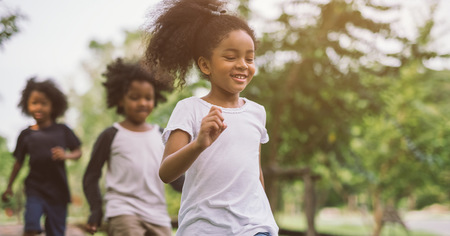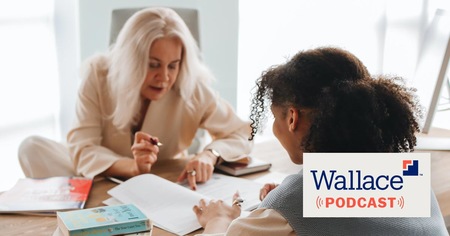Dance and music are powerful tools for engaging students in equity-focused and culturally responsive social and emotional learning (SEL). In this article, we'll explore the connections between SEL, the arts, and issues of equity, and offer five ways out-of-school time (OST) providers can incorporate dance and music into both virtual and in-person programming.
And never fear! Our strategies are easy to implement regardless of an instructor/facilitator's personal comfort level with dance or music.
BENEFITS FOR STUDENTS
When integrated into in-school or OST programs, dance and music can be used to:
- Create a friendly and welcoming atmosphere.
- Increase students' ability to focus and concentrate.
- Calm and soothe students whose emotions are running high.
- Enhance learning, creativity and critical thinking skills.
- Develop a full range of SEL competencies—self-awareness, self-management, social awareness, relationship skills, responsible decision-making.
Five Ways to Include Dance and Music in OST Programs. (Even when virtual!)
1. USE MUSIC AND MOVEMENT TO OPEN AND CLOSE YOUR SESSIONS.
Entering a room—whether in person or virtually—can be intimidating for people of any age. Music can transform your environment to make everyone feel more relaxed. By playing a bit of music to begin a session with students, you can set the tone for the day. Depending on the group and their needs, you may want to play energizing music to catch their attention or something soothing to create a sense of calm.
To add movement, you could lead some simple moves for students to follow along, or have students take turns leading a move and everyone else mirroring them. This is also a great way for students to physically check in and feel seen.
EduMotion's "Just Move" mode offers a way to bring a multicultural aspect to the movement and music students explore and makes for a great five-minute opening or closing activity.
2. OFFER MOVEMENT OR SONG BREAKS WHEN YOU TRANSITION TO NEW ACTIVITIES OR TO BREAK UP A LONGER SESSION.
Similarly, a short dance or movement video to follow along to provides a great way to reenergize a group when transitioning between various activities or to break up a longer session. To add student voice, you can invite students to submit short videos or songs that they think would be fun for the class to enjoy together during a break. Just make sure you review student submissions ahead of time and set some rules about what makes for appropriate content.
3. PROVIDE A DAILY OR WEEKLY DANCE OR MUSIC CLASS/SESSION THAT INCORPORATES SEL.
In many OST programs, the greatest barrier to bringing in a dance or music program is a lack of experience in these areas on the part of the adults in charge. Using dance and movement activities to foster learning is not as hard as it sounds, and a number of resources exist to take the pressure off of teachers and program facilitators to lead the activities.
One easy and engaging solution, EduMotion: SEL Journeys, is a digital experience that allows groups of participants to explore the world while focusing on themes like diversity, empathy, and kindness. During each 20- to 30-minute journey, participants choose a cultural destination and then follow along to learn simple movements inspired by a dance from the selected culture. The sessions open and close with an exploration of an SEL theme.
4. INVITE FAMILIES TO A LIVE SESSION WHERE THEY CAN DANCE TOGETHER.
Whether you host it in-person or virtually, a family dance party can be an incredible way to foster parent-child bonds. To involve students in planning the event, get their input on song and dance content, and have them create invitations for their parents to attend. Then, when you host the event, you can use pre-recorded dance lessons for everyone to follow along to or invite in a special guest teaching artist to lead the festivities (here's more info about engaging with dance teaching artists for live sessions). Try to offer a format that encourages parents to dance with their child, rather than passively watch the festivities.
5. WORK WITH STUDENTS TO PLAN A TALENT SHOW OR VIRTUAL MUSIC/DANCE VIDEO SHOWCASE.
A great way to build self-confidence is to provide opportunities for students to showcase their talents. Work with your students to pick a theme and then plan a lineup of performances. Make sure to have a few rehearsals and try to add some group numbers that everyone can perform in together; singing and dance are both ideal for ensemble work. You can host it live, either in-person or online. Either way, consider getting permission to record it so students can share it with family members who can't attend the live event.
THE EQUITY LENS
Dance and music are great ways to build confidence and self-esteem for students of diverse backgrounds and provide a particularly meaningful opportunity for expression of cultural identity and pride. The arts can also help students overcome cultural and linguistic obstacles by offering an outlet for nonverbal expression and communication.
When choosing resources to use for dance or music-based activities, keep in mind that incorporating diverse genres can be useful in fostering cross-cultural understanding and respect. By studying dance and music forms that originate in other parts of the world, students gain understanding of the history, identities, and values of others.
Just like trying anything new with your students, the first few steps are often the hardest. While adding dance and movement to your programming may sound intimidating, the potential benefits are well worth it. Please reach out and connect with the EduMotion team if you'd like some support in implementing dance- and music-based activities.
Margot Toppen (@EduMotionSEL) is an educator who works at the intersection of SEL, arts, and physical education. She is the founder of EduMotion, and lead designer of the company's signature SEL & dance curriculum. She frequently presents on the topic of Arts & SEL and is a member of CASEL's SEL Providers Council.
Content and photo courtesy of EduMotion.




